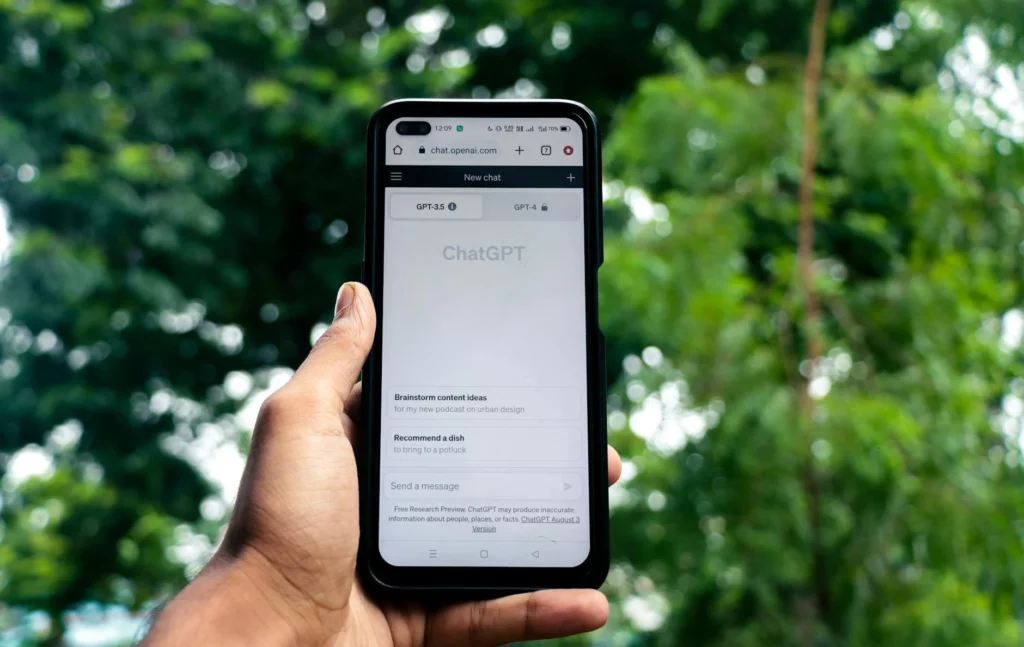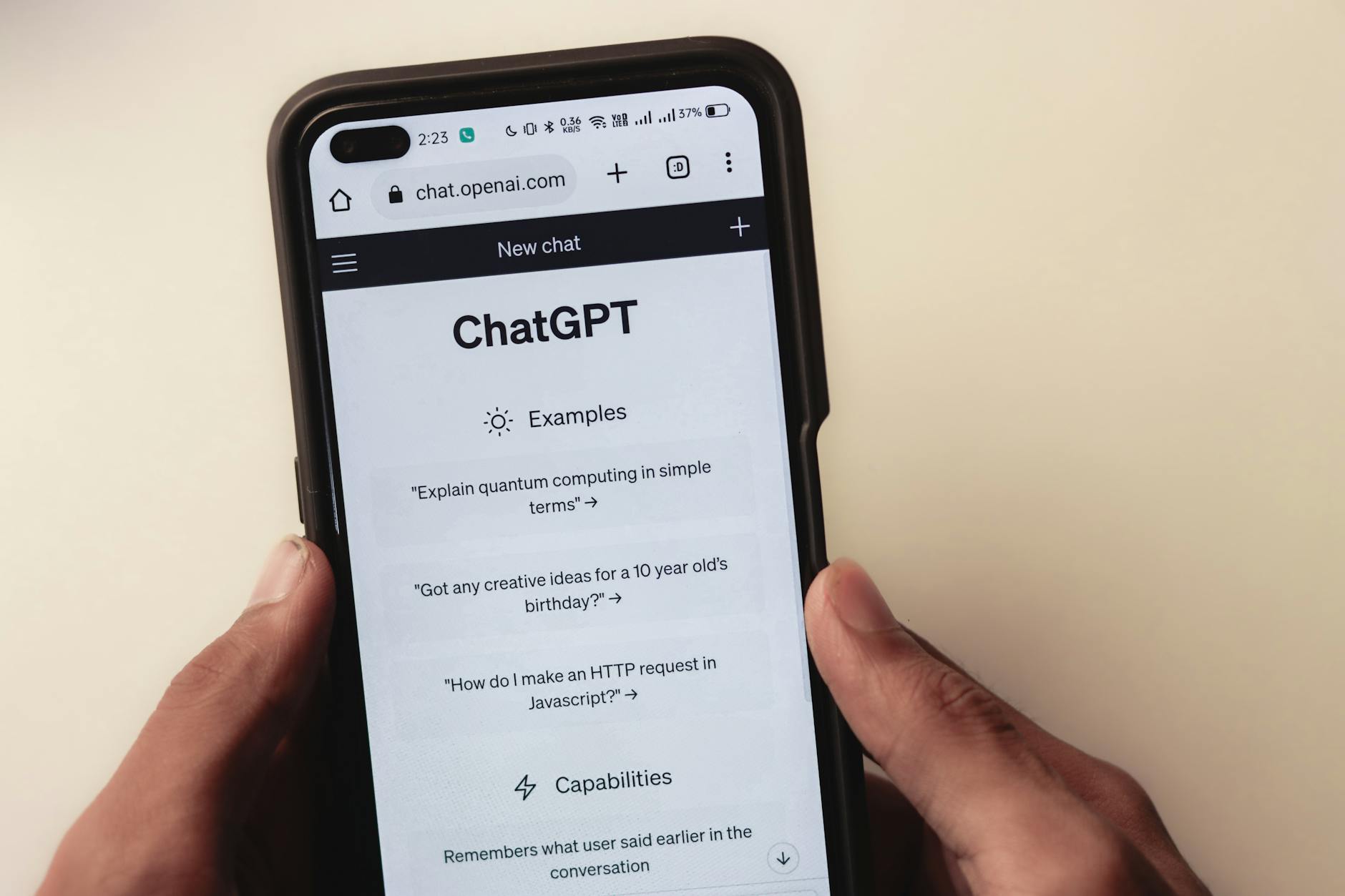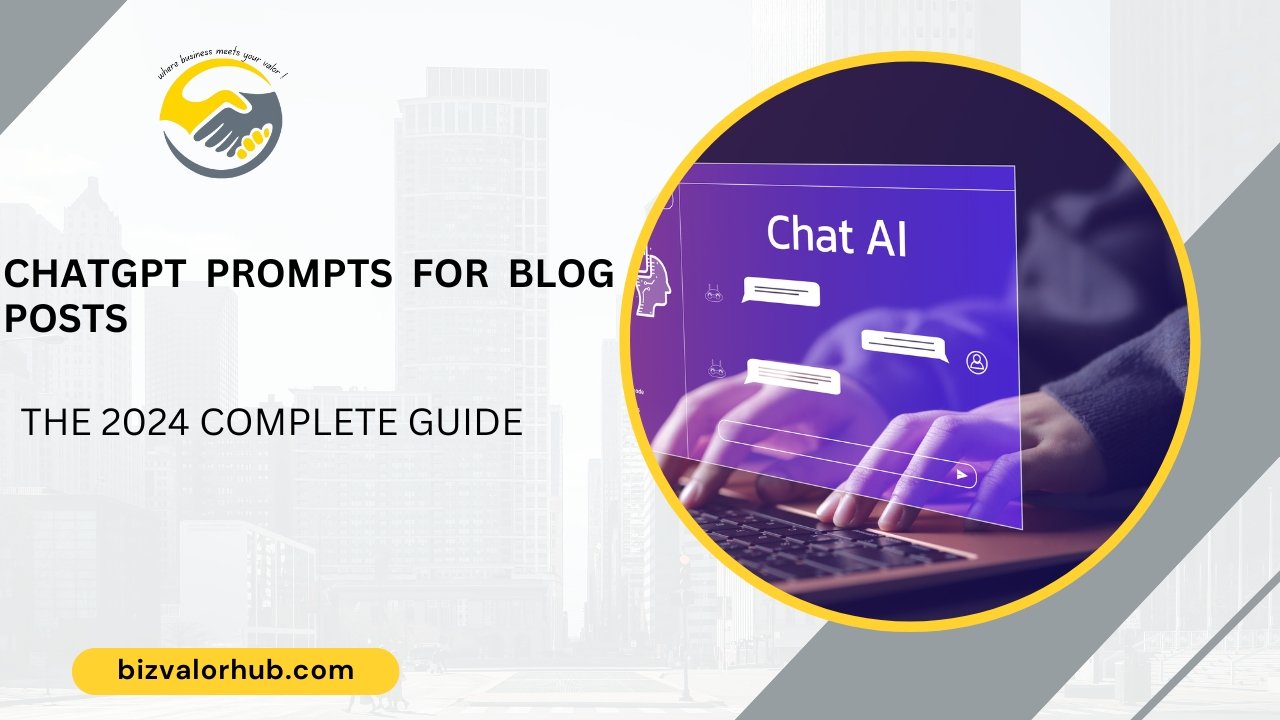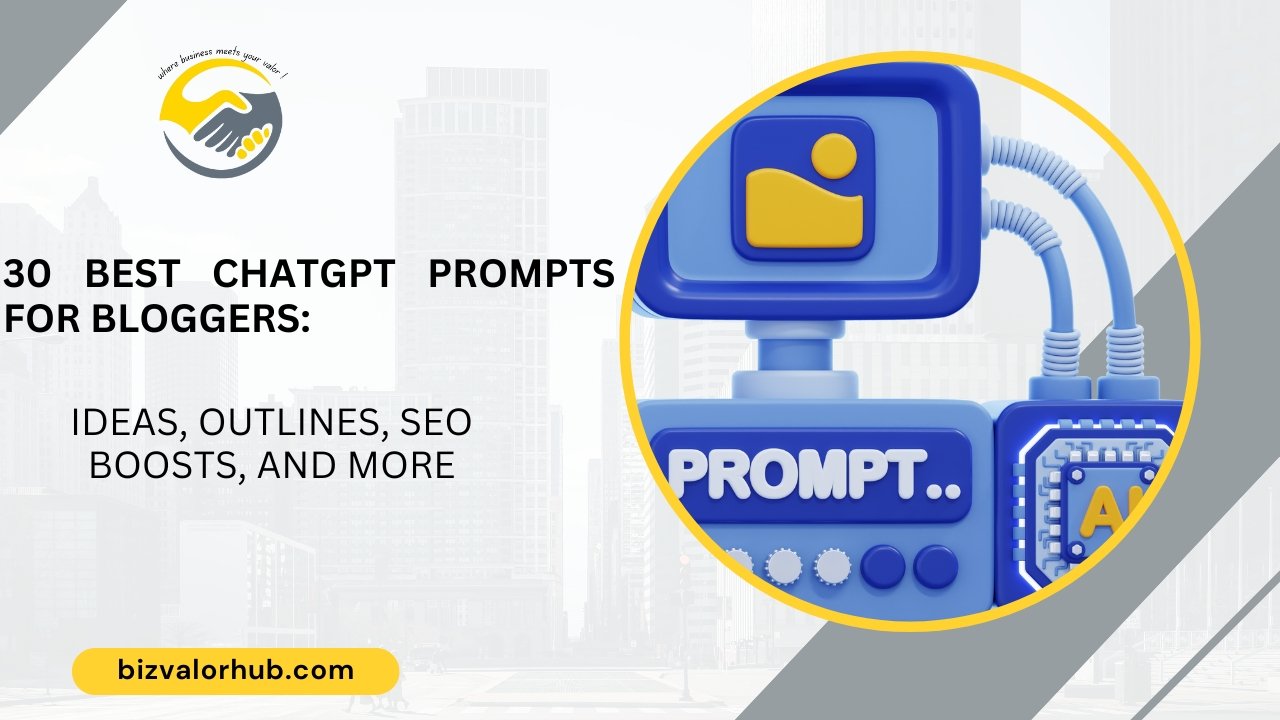Blogging just got a serious upgrade with ChatGPT in the mix—but let’s be real, using AI without the right prompts can feel like tossing random ideas into the wind and hoping for magic. That’s where this comes in handy. Whether you’re working on attention-grabbing headlines, perfecting those opening lines, or figuring out what on earth to write about, having the right prompts can make all the difference. Enter the Guide to ChatGPT Prompts for Blog Posts —your one-stop resource for sparking fresh ideas, saving time, and keeping your blogging process smooth and stress-free. Ready to make blogging easier and way more fun? Let’s get started.
Understanding ChatGPT and Its Role in Blogging
Navigating the blogosphere in 2024 feels like we’re living in the future. AI Tools like ChatGPT have emerged as lifelines for bloggers, whether you’re tackling your first post or juggling deadlines like a caffeinated octopus (Looking for more help? Check out my handpicked free AI tools list to level up your blogging game.). But how does ChatGPT actually work? And why is it suddenly EVERY blogger’s best friend? Let’s break it down.
How ChatGPT Works

ChatGPT is like having a super-smart, always-on brainstorming buddy. Powered by OpenAI’s GPT-4, it works by analyzing tons of info (think books, articles, conversations) to give you solid, natural-sounding responses.
For bloggers, it’s a lifesaver—helping with everything from brainstorming ideas to drafting full posts fast. Need a catchy headline? Done. Research for your next guide? Easy. The secret? Be specific with your prompts.
Example: Instead of “Blog post topics?”, try “List blog ideas about sustainable living.” Clear asks = better results every time.
Benefits of Using ChatGPT for Blog Writing
Why do we love ChatGPT for blogs? Oh, let us count the ways:
- It’s the ultimate time saver: We’ve all been there—staring at a blank screen, waiting for inspiration that’s apparently on an extended vacation. ChatGPT zips through ideation and drafting, turning hours of work into mere minutes.
- Say goodbye to writer’s block: That dreaded creative block? ChatGPT bulldozes through it. Just toss it a broad topic (say, “travel hacks for families”) and watch it spit out ideas faster than you can type, “Wow, I needed this.”
- You’ll never run out of ideas: Whether you’re brainstorming blog titles or mapping out an entire series, ChatGPT churns out suggestions you might not have thought of. And hey, even if its ideas aren’t perfect, they’re a springboard for your own creativity.
- SEO Optimization Gets a Boost: Even if SEO isn’t your favorite thing (does anyone actually enjoy keyword research?) But ChatGPT can crank out keywords, meta descriptions, and headlines fast—like a 24/7 intern. Want a proof? Tools like these have shown how AI-generated suggestions can elevate rankings. Check out examples of guides to use AI tailoring for bloggers.
- Tailored Creativity for Your Tone: Not all bloggers sound the same, and that’s a good thing. Whether you’re casual and snarky (looking at you, food bloggers) or professional and informative, ChatGPT prompts can be crafted to reflect your voice. By specifying tone and style in your prompt, you’re ensuring the AI isn’t just spitting out generic fluff—it’s actually working as an extension of your unique brand.
It fixes clunky sentences, nails the tone, and turns dull drafts into winners. It’s like having your own editor. Oh, and the boring stuff? Summarizing, fact-checking, organizing—done. High school essays would’ve been so much easier.
For modern bloggers, ChatGPT isn’t just a tool; it’s a partner in crime. Whether you’re stuck for ideas, pressed for time, or just want to elevate your content, this AI powerhouse has your back. Where are the limits? That’s the exciting part—we’re still figuring that out.
Types of ChatGPT Prompts for Blog Posts
When it comes to blogging, not all prompts are created equal. Some are designed to spark your most creative ideas, while others are tools for amplifying SEO or forging deeper connections with your audience. The beauty of ChatGPT lies in its versatility—whatever angle you’re working from, there’s a prompt for that. Let’s dive into the different types of ChatGPT prompts for blog posts and how they can make your blogging process smoother, more engaging, and wildly effective.
Creative Writing Prompts
Imagine you’re staring at your screen, lost in the fog that is writer’s block. (We’ve all been there.) Creative writing prompts are your mental espresso shot—quick, energetic, and guaranteed to shake something loose. These prompts are tailored to help you explore fun angles and craft unique blog posts, steering you away from stale ideas.

Here are some examples of creative writing prompts:
- “If this topic were a movie, what would its plot twist be?”
- “Rewrite this in the style of an old-school fairy tale.”
- “Imagine this topic as a conversation between two people—write it as a dialogue.”
- “Create a story where this topic solves a world problem.”
The goal? To unlock your imagination and build a unique voice. Whether you’re spinning a fictional anecdote or injecting some humor into your post, these prompts ensure your content feels fresh and memorable.
SEO-Focused Prompts
Blogging without SEO is like throwing a party but forgetting to invite your friends—it’s pointless. SEO-focused prompts are lifesavers for bloggers aiming to rank higher on search engines without sacrificing quality or creativity. These prompts help you structure your blog for better visibility and performance in search results.
Consider key examples of SEO-focused prompts:
- “Generate a list of long-tail keywords related to [your topic].”
- “Write a meta description under 160 characters for this blog post.”
- “Optimize this content for the keyword: ‘ChatGPT Prompts for Blog Posts.’”
- “Create subheadings that target user search intent around [specific keyword].”
Tools like keyword optimization and SERP insights become second nature when working with ChatGPT. With these prompts, you can fine-tune everything from keyword density to blog structure.
Audience Engagement Prompts
How do you transform casual readers into loyal followers? It’s all about engagement. Audience engagement prompts are like cheat codes for fostering a sense of connection and sparking meaningful interactions. They prioritize creating content that doesn’t just inform but gets people talking, sharing, and coming back for more.
Prompts designed for audience engagement can look like this:
- “Suggest 5 questions readers might ask about this topic.”
- “Create a survey or quiz question based on this blog post.”
- “Add a compelling call-to-action that encourages comments or social shares.”
- “Write a conversational opening paragraph to hook the reader.”
If engagement feels like a shot in the dark, these prompts act as the flashlight guiding your way. They help you build relationships with your audience—because a blog post isn’t just a monologue; it’s the start of a dialogue.
Whether your goal is to grow organic traffic, craft binge-worthy content, or connect with your readers on a deeper level, these tailored ChatGPT prompts make your job easier, faster, and more enjoyable. The best part? You’re not just blogging. You’re creating experiences.
Crafting Effective ChatGPT Prompts
A well-crafted ChatGPT prompt is the secret ingredient to unlocking the full power of AI for your blog writing. Think of it as a roadmap—if your directions are clear and purposeful, you’ll end up exactly where you want to be. In this section, we’ll talk about using specific language and incorporating keywords to get the most out of ChatGPT.
Using Specific Language

Imagine asking someone to fetch “something to drink” and they return with a gallon of milk when you actually wanted coffee. Sounds frustrating, right? This is exactly what’s at stake when your ChatGPT prompts are vague. The clearer and more specific your language, the better the response it can generate. Ambiguity can cause wild, unpredictable outputs—exactly what we want to avoid.
Here are our golden rules:
- Be direct: Instead of saying, “Give me information about blogging,” try “List 5 tips for beginner bloggers to increase website traffic.”
- Define AI Identity: Let AI play a good role in any position you want it to be.
- Set An Example: Teach ChatGPT by a solid example.
- Set a tone or style: For example, “Write in a conversational tone with first-person narration.”
- State the format: Indicate whether you want bullet points, a structured outline, or a detailed paragraph.
Remember, ChatGPT isn’t a mind reader—it’s phenomenal, but it works best when you lay out the specifics. A good prompt is like giving your GPS the address instead of just saying, “Take me somewhere nice.”
Incorporating Keywords
If you want your blog to rank on Google (and who doesn’t?), weaving SEO keywords into your ChatGPT prompts is an absolute must. Keywords act as signposts for search engines, connecting your content to your target audience—and ChatGPT can help you optimize this process effortlessly.
Let’s break it down:
- Add primary keywords: Include phrases like “ChatGPT prompts for blog posts” to keep your content relevant.
- Explore related terms: For instance, along with “blog prompts,” try “AI blogging tools” or “SEO content generation.”
- Focus on user intent: Instead of generic prompts, use ones like, “Create an engaging blog intro focused on ChatGPT blogging prompts.”
The beauty here lies in balance. Keywords should guide the prompt, not overwhelm it—kind of like seasoning your food. Get too keyword-happy, and your prompt becomes as clunky as a salt-saturated soup. Done right? It’s keyword magic.
Are you ready to start crafting prompts that don’t just get the job done but knock it out of the park? Let’s keep going.
Advanced ChatGPT Prompts for Experienced Bloggers
By now, we’re not just scribbling first-draft ideas or fishing for inspiration. As experienced bloggers, we’re refining tactics, exploring advanced strategies, and maximizing every ounce of ChatGPT’s power. Ready to break through the usual limitations and truly elevate your blog posts? Let’s roll up our sleeves.
Content Structuring Prompts
If you’ve ever tackled a massive topic and thought, “Where do I even start?”—you’re not alone. The secret sauce here is clear, intentional structuring. With the right prompts, ChatGPT can act like your digital architect, framing your ideas into a coherent, reader-friendly structure.
Here are some killer content structuring prompts to try out:
- “Outline a 5-part blog series on [your niche topic], including key points for each post.”
- “Create a detailed blog post structure for an ultimate guide to [topic].”
- “Suggest subheadings for a tutorial on [specific subject], making them engaging and easy to follow.”
- “Break down a complex topic like [technical subject] into simple, organized steps for beginners.”
Think of these prompts as the scaffolding that lets you build skyscrapers of thought, one solid floor at a time. They help you avoid info-dumps and instead guide the reader through a carefully constructed narrative.
Want more guidance? Structure-focused prompts like these pair perfectly with tried-and-tested frameworks from experts. For deeper insights, check out some expert tips on boosting productivity in blog writing.
Diverse Style Prompts
Writing in a single tone is like eating plain oatmeal every day—you can, but yawn. Diverse style prompts unlock different voices, moods, and vibes, elevating your blog from monotonous to magnetic.
Here are some ways we love to mix it up:
- “Rewrite this blog intro in a humorous tone to hook readers.”
- “Draft a conclusion that’s motivational and leaves readers inspired to take action.”
- “Write this section as if it were a journal entry, with a personal touch.”
- “Turn this technical guide into a friendly Q&A format for a casual audience.”
- “Reframe this paragraph in a bold, authoritative voice—like a TED Talk moment!”
These prompts push your writing boundaries, whether you’re catering to casual readers or crafting content for professionals. Switching styles isn’t just fun—it’s strategic. Diverse tones keep your audience intrigued and ensure your content continuously resonates with various reader personas.
| Prompts Type | Example |
|---|---|
| Creative Writing Prompts | 1. If this topic were a movie, what would its plot twist be? 2. Rewrite this in the style of an old-school fairy tale. 3. Imagine this topic as a conversation between two people—write it as a dialogue. 4. Create a story where this topic solves a world problem. |
| SEO-Focused Prompts | 5. Generate a list of long-tail keywords related to [your topic]. 6. Write a meta description under 160 characters for this blog post. 7. Optimize this content for the keyword: 8. ChatGPT Prompts for Blog Posts. 9. Create subheadings that target user search intent around [specific keyword]. |
| Audience Engagement Prompts | 10. Suggest 5 questions readers might ask about this topic. 11. Create a survey or quiz question based on this blog post. 12. Add a compelling call-to-action that encourages comments or social shares. 13. Write a conversational opening paragraph to hook the reader. |
| Content Structuring Prompts | 14. Outline a 5-part blog series on [your niche topic], including key points for each post. 15. Create a detailed blog post structure for an ultimate guide to [topic]. 16. Suggest subheadings for a tutorial on [specific subject], making them engaging and easy to follow. 17. Break down a complex topic like [technical subject] into simple, organized steps for beginners. |
| Diverse Style Prompts | 18. Rewrite this blog intro in a humorous tone to hook readers. 19. Draft a conclusion that’s motivational and leaves readers inspired to take action. 20. Write this section as if it were a journal entry, with a personal touch. 21. Turn this technical guide into a friendly Q&A format for a casual audience. 22. Reframe this paragraph in a bold, authoritative voice—like a TED Talk moment! |
Jump into these advanced prompts, and you’ll find that ChatGPT isn’t just a tool—it’s like having a versatile co-writer who adapts to your needs on command. Stay consistent with your expertise but don’t be afraid to experiment—some of the best content arises when we stray just a bit out of our comfort zones!
Measuring the Effectiveness of ChatGPT Prompts
Crafting prompts to generate content is one thing, but ensuring their effectiveness? Well, that’s the real challenge. Measuring how well your ChatGPT prompts perform helps you refine your approach, align outputs with reader expectations, and boost the overall quality of your blog posts. Let’s break down two key ways to evaluate prompt effectiveness: reviewing audience engagement metrics and using direct feedback to iterate.
Analyzing Engagement Metrics

How do you know if your content resonates with your audience? The answer lies in numbers—page views, average read times, social shares, and comments. By analyzing these metrics, we can determine if the prompts we used sparked the kind of responses we wanted.
Here are a few tools we find helpful:
- Google Analytics: Tracks everything from user location to time on site. Check metrics such as bounce rates and average session duration to gauge how engaging your content is.
- Social Media Insights: Platforms like Facebook or Instagram provide insights into shares, likes, and comments. Did your blog link get shared widely? Did people engage with your post captions on social channels?
- Heatmaps (like Hotjar): Want to know if readers scroll through your entire post? Heatmaps show you exactly where people click, hover, or leave.
Keep in mind, specific metrics can also highlight whether the tone set by ChatGPT aligns with reader expectations. If a blog post gets lots of social shares but few comments, for instance, it might mean the content was engaging but not conversation-provoking.
Digging into these numbers isn’t just a one-time effort. Regular metric reviews will help you identify prompt styles that perform best. You might find specific types—whether it’s tutorial content or storytelling-based prompts—generate better results.
Iterating on Feedback
Analytics tools can offer insights, but let’s not forget the power of direct reader feedback. Readers are your ultimate judges, and they’re not shy about providing opinions (sometimes, even when you haven’t asked!). Use this as a goldmine for improvement.
Here’s how we approach it:
- Read Comments and Emails: Pay attention to what readers say in blog post comments or subscriber emails. Are they loving the tone? Is there confusion in certain areas? This feedback can be incredibly telling.
- Post a Survey: Use tools like Typeform or Google Forms to ask readers straight-up questions. For instance, “Did this blog answer your question? If not, what were we missing?”
- A/B Test Your Prompts: If you’re working on a series of posts, experiment! Use slightly different prompt styles for each piece and track engagement levels. Was the conversational tone in prompt A more captivating than the formal structure of prompt B?
- Encourage Ratings: A simple poll at the end of your blog post asking, “Was this helpful?” not only gives you directional insight but also encourages interaction.
Feedback often shines light on nuances we may overlook—like the fact that readers prefer actionable advice packaged in humor or examples that make complex ideas easy to digest. Don’t just collect this feedback. Actually use it to tweak your prompts, and remember: it’s a journey, not a one-and-done task.
By combining data-driven analytics with human feedback, we’ll always know where our prompts succeed and how they can be even better.
Resources for Further Learning
Navigating the world of ChatGPT can feel like diving into an endless ocean of possibilities. Whether you’re a beginner or a seasoned pro, having the right resources at your fingertips makes a world of difference. In this section, we’ll share some of the best ways to deepen your knowledge and skills in crafting prompts for blogging success.
Online Communities and Forums

Sometimes the best way to learn is by joining a community. Online forums and groups are goldmines for tips, best practices, and troubleshooting prompt challenges. Here are a few places we find super helpful:
- Reddit: Subreddits like r/ChatGPT are thriving spaces packed with discussions, prompt experiments, and real-world use cases.
- Facebook Groups: Private groups for bloggers or AI enthusiasts often share curated tips and even free prompt templates.
- Discord Servers: Many AI-focused servers host dedicated channels for ChatGPT tips and discussions. Just one active server can connect you with hundreds of creators.
- Slack Workspaces: Some blogging communities organize Slack groups purely focused on ChatGPT.
These spaces aren’t just for Q&A. They’re places to brainstorm ideas, share successes (or failures), and find prompt hacks that make ChatGPT even more effective.
Each of these articles is chock-full of examples and insights that will have you creating your best prompts yet. If you’re looking for more specialized tips, don’t forget to also check out our Refined 30 Best ChatGPT Prompts for Blogs, SEO, and Social Media guide—it’s guaranteed to add value to your writing game!
Conclusion
Using the right ChatGPT prompts can transform the way we create blog posts. It’s all about working smarter, not harder. By tailoring prompts to suit specific needs—whether for audience engagement, SEO, or creativity—we unlock a powerful tool that saves time and boosts quality.
The best part? Experimentation is key. Trying different approaches helps us discover what works best for our blogs and unique voices. So, what prompt will YOU try today? Whether you’re brainstorming topics or polishing drafts, don’t just take our word for it—test and see the magic unfold.
ChatGPT Prompts for Blog Posts Quick FAQ
1. What are the benefits of using ChatGPT prompts for blog posts?
ChatGPT prompts offer several advantages for bloggers:
- Generate creative ideas: ChatGPT can help you overcome writer’s block and spark new ideas for your blog posts.
- Save time: ChatGPT can create drafts quickly, freeing you to focus on editing, refining, and adding your unique voice.
- Improve SEO: By incorporating relevant keywords and optimizing for search engines, ChatGPT can help you reach a wider audience.
2. How can I make sure my prompts are effective?
To create powerful ChatGPT prompts, follow these tips:
- Be specific: Clearly define the topic, length, tone, and target audience of your blog post.
- Provide context: Give ChatGPT relevant information, such as keywords, existing content, and your blog’s overall style.
- Use clear and concise language: Avoid jargon or technical terms that ChatGPT may not understand.
- Include keywords: Incorporate relevant keywords to help ChatGPT understand the desired focus of your post and improve its SEO potential.
3. Can I use ChatGPT prompts for any type of blog post?
Yes, ChatGPT prompts are versatile and can be used for a wide range of blog post formats, including:
- How-to guides
- Opinion pieces
- Product reviews
- Listicles
- News articles
Experiment with different prompt styles and techniques to find what works best for your blog.
4. Can I use ChatGPT to generate entire blog posts?
While ChatGPT can generate impressive blog post content, it’s best to consider it a tool to assist your writing process. You can use it for generating ideas, outlines, and even paragraphs. However, always review and edit the generated content to ensure it aligns with your voice, style, and accuracy.
5. How can I ensure the quality of content generated by ChatGPT?
The quality of ChatGPT’s output is heavily reliant on the prompts you provide. Be specific and detailed in your prompts, clearly outlining the desired tone, style, target audience, and relevant keywords. Additionally, critically review the generated content for factual accuracy, clarity, and engagement before incorporating it into your blog post.
6. Can ChatGPT replace human blog writers entirely?
ChatGPT is a powerful tool but can’t fully replace the creativity, critical thinking, and unique voice of a human blog writer. It’s best to use ChatGPT as a collaborative tool to enhance your writing process, generating ideas and content that you can then refine and polish to create high-quality, original blog posts.









